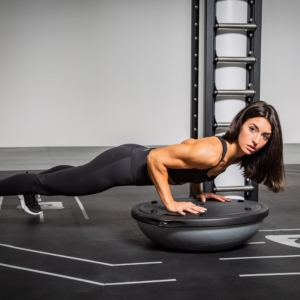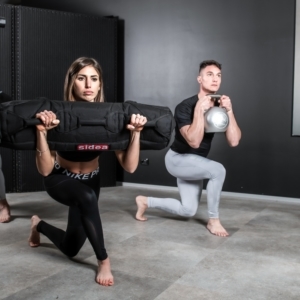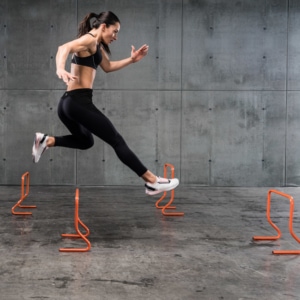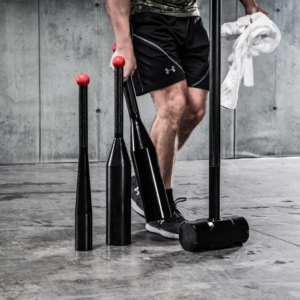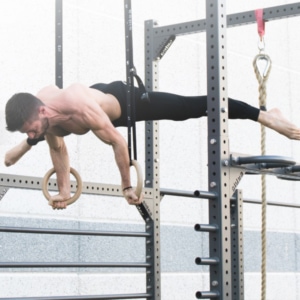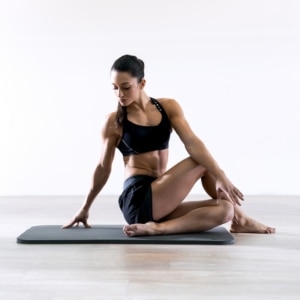🇮🇹 Leggi in Italiano
Speed, stamina, power, intensity: the athletic part of football is becoming more and more important nowadays. At a professional level, matches are played at a frenetic pace, and they are often won by the team that is able to stay clearheaded and fresh for the most time possible over the course of the 90 minutes. Is this also valid for youth football? And what variations has it brought to the physical preparation in the Academies?
“Undoubtedly, physical preparation is a key factor in modern football” declared about this Alberto Pasini, physical trainer of the U19 Atalanta team and head of the trainers of the black and blue Academy, “much more than only few years ago, but we are convinced that football is still a mainly technical-tactical sport, and therefore that the most important thing remains the abilities of the players from a technical point of view. Our main goal as a Youth sector is to help our players improving, and this means that within our approach the physical part should not be considered more important than the technical-tactical one. What we try to do is to integrate as much as possible these two aspects of football training, developing them in the same context, specially for what concerns the younger categories”.
This has always been Atalanta’s approach, and it has brought the club from Bergamo to consolidate as one of the best Academies not only in Italy for young talents provided to the professional leagues and National teams. “This club has always aimed to the technical improvement of the players, and therefore to the quality more than the quantity”, continued Pasini, “and this approach influences the way we play football (both in the Academy and in the First Team) but also the way we select the talents for our youth sector. In all this process, the physical factor is important but not essential, if compared to the technical quality”.
The physical preparation as a way to transmit the right culture of work to the players
The physical work has also another role in the Academies, that is to transmit to the young players a good attitude towards sacrifice, fatigue and, in general, working hard: “From a philosophical point of view, we have them work in the gym also for this reason: our aim is to train them as future professional football players, and in some contexts this sport is not only fun, but also hard work and fatigue. We want to create in them the right conditions in order to be ready for professional football, and we try to obtain this through the transmission of a culture of work that nowadays we think is essential. The feedback varies from one player to another, depending on his personal experiences and characteristics (they come from all sorts of geographical and social context), but in general here at Atalanta there is a good attitude to work. This is possible also because most of our players have grown up in our Academy since when they were only children, and when they arrive at an agonistic level they approach hard work and fatigue as normality”.
Strength training in youth football
Strength training is therefore introduced gradually in the physical preparation of the young players, as Roberto Calà (responsible of the strength training for the Atalanta youth football teams) has confirmed: “For all the youngest categories (until the agonistic level, which starts from the U15 team) we try to work on general strength and on body consciousness in a decontextualized way, which means integrating it with the athletic an technical training and therefore with no need of a context like a gym. The aim is to provide them a knowledge on how to use their body in the space. This is a functional training approach that differs from the analytical one of the ‘90s, which derived from other disciplines like bodybuilding and used to bring the athlete to a dead end. Actually we are trying bring in the gym in particular the teams from the U16 to the U19 and our aim is to create a positive redundancy of stimuli in different periods of the preparation and for different purposes: prevention (reduction of the injury risks), increase of the strength abilities in many ways and also analytical aspects that, despite not being as central in the preparation as they were in the ‘90s, can be taken in consideration to work at the same time on the match performance and on the long term development of a correct physical structure for modern football”.
Youth football preparation: from the ‘susceptible phases’ to the motor skills
Periodization is indeed essential to build a correct physical and athletic preparation in youth football and, about this, Atalanta is following the path of the best clubs in Europe: “Premier League’s Academies have developed a work periodization that is no longer based on the so called ‘susceptible phases’ (time windows that theoretically should be dedicated to the development of specific abilities) but on motor skills. It is not about a sectorial work on specific muscles but creating a long-term development that aims to the globality of movements, even if contextualized in specific situations and for specific purposes”. In particular, in the recently inaugurated gym in Zingonia that has been entirely dedicated to Atalanta youth teams, the young players are guided into their physical preparation through exercises like pull-ups and push-ups, deadlifts, lunges and squats, conditioning at the same time also coordinative aspects through double or single stance exercises. Nevertheless, it is also very important that the training system is adapted to the players characteristics and not vice versa.
Indeed, athletes with different motor skills should be trained through different approaches but, in practice, it is difficult to apply this to this kind of context: “Only the agonistic level teams, here at Atalanta Academy, are 6, and each of them has 20-25 players: it is almost impossible for us to create customized training programs for every single one of them. What we try to do is to identify the profiles that have particular needs: individual work must take in consideration both the structural qualities and the globality of the whole training path of the player. In this process, the gym becomes very important, because through a complementary work it allows to balance the aspects that have been neglected or excessively stressed during the training sessions or the matches. In addition, this could raise the players’ awareness about the fact that their performance on the pitch can be controlled and optimized through a specific work”.
SIDEA NEWSLETTER
Sign up with your email address to receive news, events and focus articles about Sidea and OUTRACE


